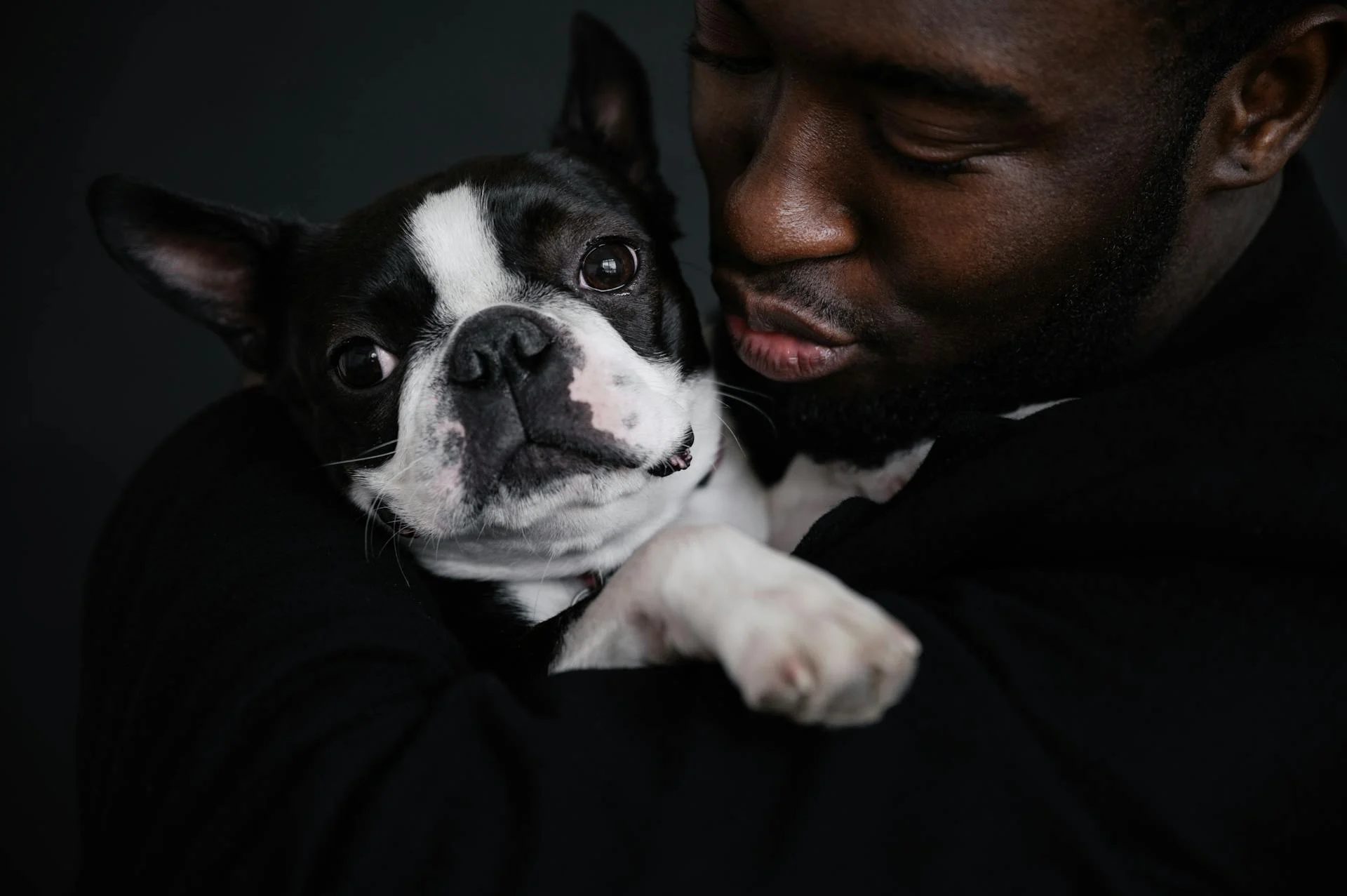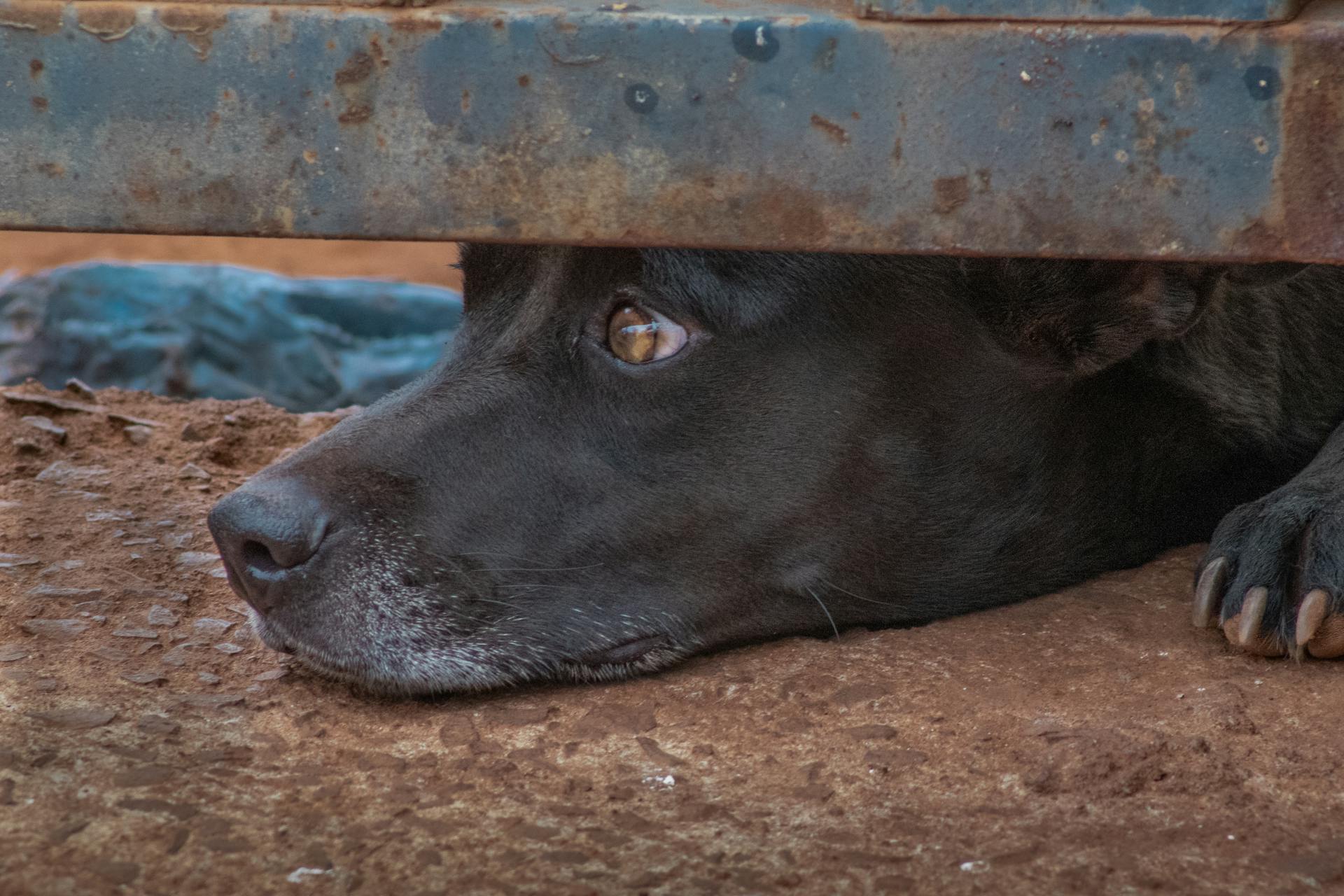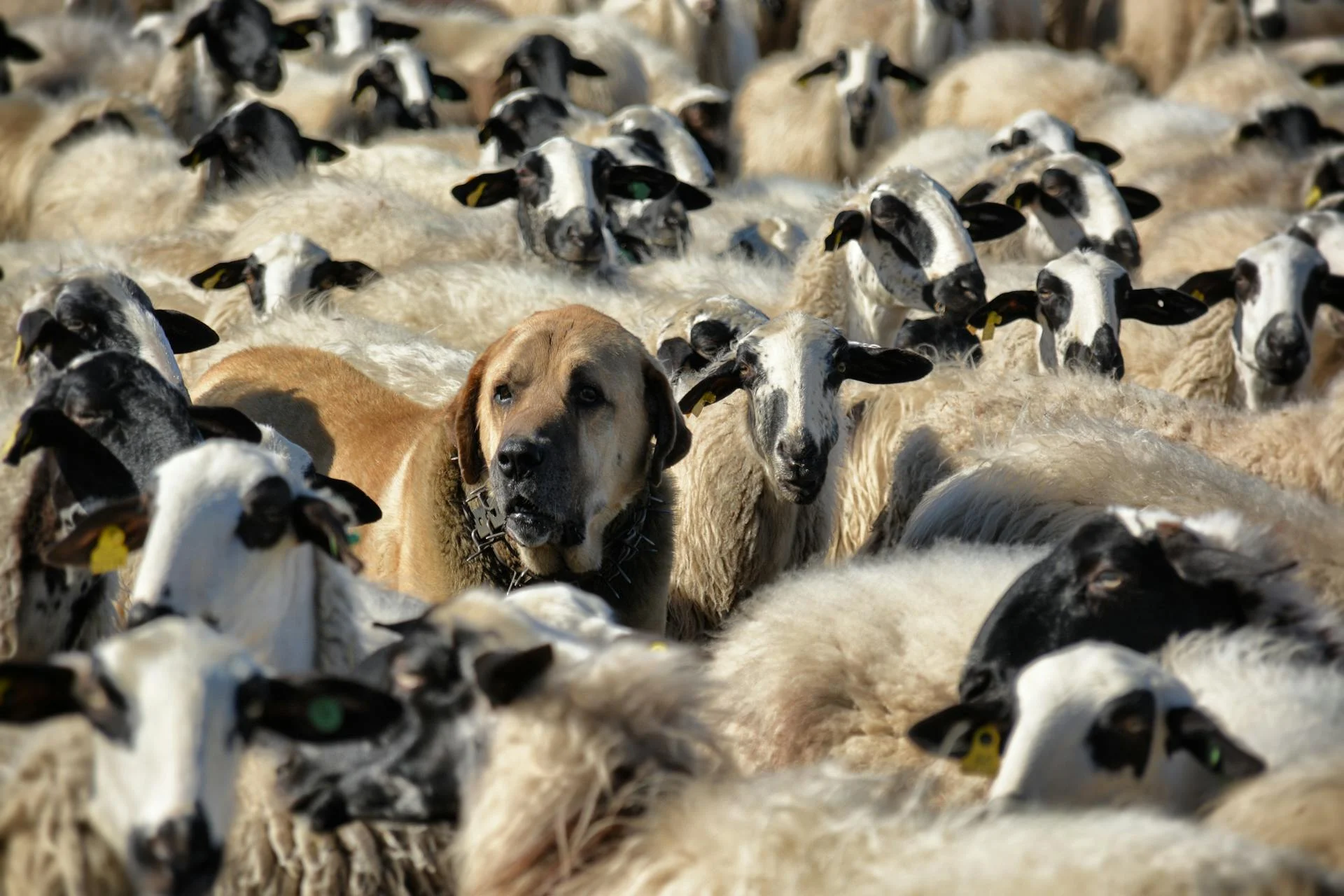
Patterdale Terriers can be strong-willed and independent, which can sometimes lead to behaviour problems.
They require consistent training and socialization from an early age to develop good habits and prevent unwanted behaviour.
A lack of mental and physical stimulation can cause boredom and frustration, leading to destructive behaviour such as digging and chewing.
Patterdale Terriers are naturally protective of their family and territory, but this can sometimes manifest as aggression towards strangers or other animals.
With patience, consistency, and positive reinforcement, you can help your Patterdale Terrier overcome common behaviour problems and develop into a well-behaved companion.
Aggression in Patterdale Terriers
Aggression in Patterdale Terriers can be a complex issue. Patterdales that are not adequately exercised and mentally stimulated can divert their energy to other things, such as nipping at small and fast-moving children.
Lack of socialization and training is a common cause of aggression in Patterdales. If your Patterdale has not been socialized with adults, children, or other dogs, and trained well from a young age, it may be too aggressive to be a family dog.
Some Patterdales can become aggressive due to guarding behavior. They may guard a resource such as a bone, food bowl, or even a person, and snap if anyone else comes near.
Patterdales can also develop aggression towards other dogs, even if they were socialized well as puppies. This can happen in adulthood for various reasons, and it's essential to continue socializing your dog as an adult.
Rescue Patterdales may also exhibit aggression due to bad past experiences. They may be scared and require a lot of love, patience, and positive experiences to rehabilitate them.
Here are some signs of aggression in Patterdales to look out for:
- Nipping at small and fast-moving children
- Snapping at people who approach their food or resources
- Growling or snapping at other dogs
- Randomly biting people, strangers or those they know
- Guarding behavior towards people or resources
If you're experiencing any of these signs of aggression in your Patterdale, it's essential to seek professional help from a positive reinforcement dog trainer or behaviorist.
Training and Behavior
Training and behavior are crucial aspects of Patterdale terrier ownership.
A lack of training and exercise can lead to aggression in Patterdales, especially towards small and fast-moving children. This is because they are bred for chasing and need adequate mental stimulation and physical activity.
To prevent aggression, it's essential to socialize your Patterdale well from a young age, especially with adults, children, and other dogs. If your Patterdale isn't socialized properly, it may be too aggressive to be a family dog.
Patterdales require at least an hour of walking per day, plus extended walks on weekends and hiking holidays. This means they're great for countryside settings and very active families.
Puppy training should start as soon as possible, ideally from 8 weeks. York Dog Training School recommends 1-2-1 visits to your home for effective training.
To address common issues like toilet training, crate training, biting, and destructive behavior, consider enrolling your puppy in a puppy class or hiring a one-to-one trainer.
In some cases, Patterdales can become aggressive towards other dogs, even if they were socialized well as puppies. This may develop in adulthood due to various reasons, and it's essential to continue socializing them as adults.
To socialize your Patterdale with other dogs, try practicing positive enforcement techniques, such as click treats, and find a well-behaved dog to walk with on a lead.
For more insights, see: Patterdale Terrier Puppies
Causes: Lack of Training and Exercise
Lack of training and exercise can lead to aggression in Patterdales. They need at least an hour of walking per day, plus extended walks on weekends and hiking holidays.
Patterdales that don't get enough exercise tend to divert their energy to other things, like nipping at small and fast-moving children. This is because they love to chase and are bred for it.
If you don't socialize your Patterdale with adults, children, or other dogs, and train them well from a young age, they may become too aggressive to be a family dog. This is why some families get Patterdales from puppies to raise them together.
Dog-aggression or leash reactivity is a common problem, often due to lack of socialization and training with other dogs. It can be embarrassing and even dangerous to walk a leash-aggressive dog.
Enrolling your puppy in a puppy class can help prevent dog-aggression, but adult Patterdales with this problem might need one-to-one training before joining a class.
Broaden your view: Norwich Terrier Puppy
Causes: Past Experiences
Past experiences can have a profound impact on a Patterdale's behavior. Some rescue Patterdales can be aggressive due to their past experiences.
Blake, a rescue Patterdale, was scared of strange men because he lived with a violent man. He would bite when approached by a man.
Patterdales that have been mistreated may be aggressive because they are scared. They need a great deal of love, patience, and positive experiences to rehabilitate them.
Even with rehabilitation, they may always be a little unpredictable. This is why it's essential to consider the dog's past experiences when deciding to adopt a rescue Patterdale.
A household with no children and plenty of time for training can be beneficial for a rescue Patterdale like Blake.
You might enjoy: Lakeland Terrier Rescue
Home Puppy Training
Training your new puppy at home can be a fun and rewarding experience for both you and your furry friend. It's essential to start training as soon as possible, ideally from 8 weeks old.
You can expect your puppy to learn quickly, and they'll love the process. York Dog Training School recommends one-on-one visits to your home for training, which can be more effective than group classes.
Toilet training is a crucial aspect of puppy training, and you'll want to learn the easiest way to do it. Crate training is also essential for establishing good habits and preventing destructive behavior.
Biting and destructive behavior are common issues in puppies, and you'll want to know how to stop them. With the right training, you can teach your puppy to behave and become a well-adjusted member of your family.
Here are some specific areas of training you can expect to cover with a professional trainer:
- Toilet Training
- Crate Training
- Biting (stopping "mouthing" or biting)
- Destructive Behaviour
It's also worth noting that some puppies may develop behavioral issues due to past experiences, such as being attacked by another dog. In such cases, patience and the right training can help your puppy overcome these issues and become a well-behaved companion.
Stopping Bad Behavior
Stopping bad behavior in your Patterdale terrier requires a thoughtful approach. Relying solely on treats to train your dog may not be effective, especially with a Patterdale, as they may only behave when a treat is involved.
Some common issues that arise include pulling on the lead, lunging at other dogs, barking at dogs and people, jumping up at people, aggression, running away and not returning, and constant barking. These problems can be solved with the right training approach.
A Patterdale terrier training program can help address these issues, providing a solution to bad behavior.
For more insights, see: Rat Terrier Behavior Problems
Causes: Other Factors
Social pressures can contribute to bad behavior, such as bullying in schools where students feel pressured to conform to certain norms.
The lack of clear consequences can also enable bad behavior, as seen in cases where parents fail to discipline their children.
Exposure to violence in media can desensitize people to its effects, making them more likely to engage in aggressive behavior.

Modeling behavior from authority figures can also be a factor, as people often imitate the behavior of those they respect and admire.
Poor impulse control can lead to reckless decisions, such as texting and driving, which can have devastating consequences.
A lack of empathy can also contribute to bad behavior, as people may not fully consider the impact of their actions on others.
Stopping Bad Behaviour in Terriers
Terrier owners know that these feisty dogs can be prone to bad behavior. Relying on treats exclusively to train a Terrier, such as a Patterdale, just doesn't work.
Some common problems with Terriers include pulling on the lead, lunging at other dogs, and barking at people and other dogs. These behaviors can be challenging to address, but they can be stopped.
Stopping bad behavior in Terriers requires a more effective approach than just relying on treats. This approach focuses on solving problems with bad behavior, rather than just bribing the dog to behave properly.
Here are some common problems with Terriers and how to address them:
- Stop pulling on the lead
- Stop lunging at other dogs
- Stop barking at dogs & people
- Stop jumping up at people
- Stop aggression
- Stop running away and not returning
- Stop constant barking
Muzzling and Safety
It's a good idea to consider a baskerville muzzle if it means that your dog and other dogs (and people) will be safer.
In some countries, it is the law to muzzle aggressive dogs.
You can introduce the muzzle slowly in training with lots of positive reinforcement and building up exposure.
Your dog may grow to like it if it means he is going out!
It's essential to seek support, such as getting a 1-2-1 trainer if possible, and continue with training and socialisation.
Frequently Asked Questions
Do Patterdale Terriers ever calm down?
Patterdale Terriers tend to calm down with age, but consistent exercise is key to preventing excessive energy. Regular physical activity helps them channel their energy and become more relaxed companions.
Featured Images: pexels.com


